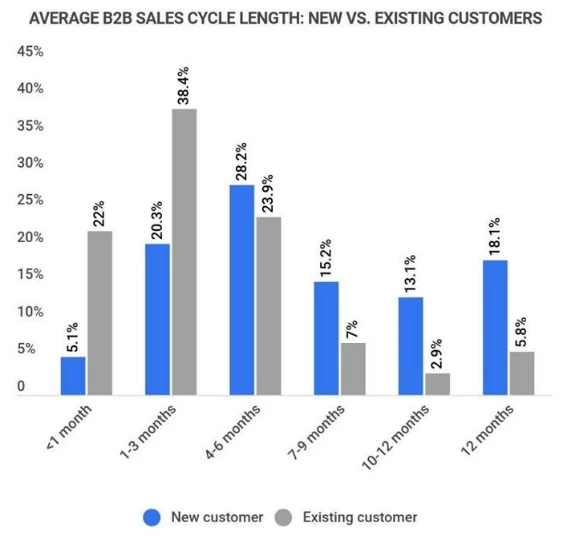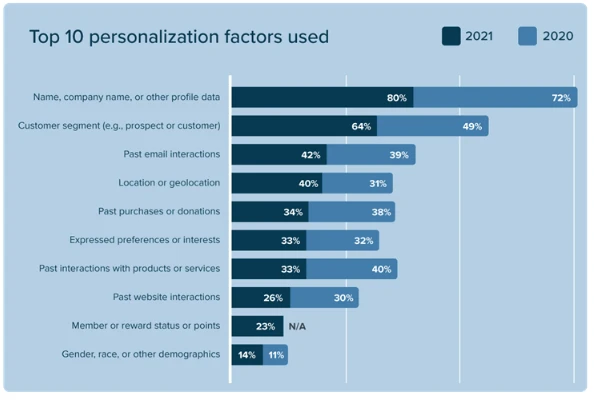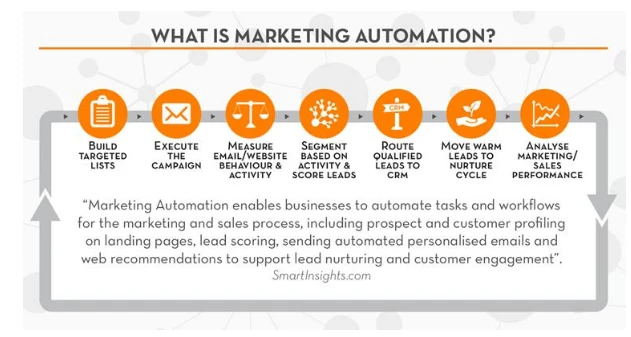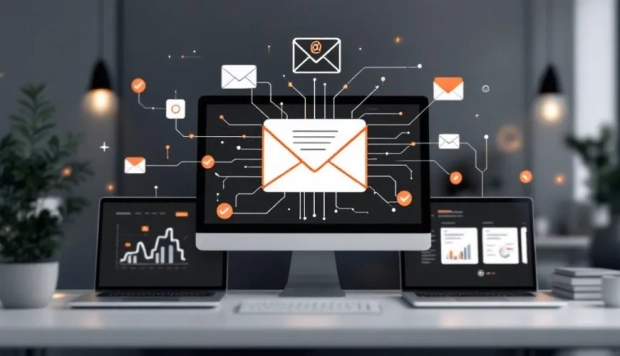Sales Booster: B2B Marketing Strategies in 2025

What intriguing times we're living in!
Do you know that artificial intelligence could soon replace many physicians worldwide, if not completely? The latest news- AI saved an unborn baby by alerting a pregnant woman from North Carolina.
We now know, the future is to adapt or perish. So, what lies ahead for B2B marketing?
Well, the business landscape is changing rapidly. Marketers, sales representatives, and others are using different trends, strategies to generate a good number of leads and further convert them to increase the customer base.
The B2B market worldwide would reach new heights ($28 trillion in 2025). - Source
So, as a marketer, you should be on your toes to integrate the best strategies. One of the challenging aspects of B2B marketing is the longer sales cycle; companies should execute each strategy to reduce the sales cycle.
The below graphical representation shows how sales cycle length varies from old to new customers:

Source: zippia.com
As you could see in the above graph, the average B2B sales cycle length (<1 month) for old customers is 22%, whereas for new customers it is only 5%. It shows that as old customers are aware of products, they don't take much time to buy products of the same brand, whereas it is different for new prospects. The sales cycle length (1-3 months) for old customers is 38.4%, whereas for new customers it is 20.3%. Likewise, we could see that as the sales cycle length increases, it is always the existing customers who purchase faster than new customers. And, that's fair enough, when a prospect isn't aware of a product, they are likely to do more research. And so, delay making a decision.
The most important question is can we reduce the sales cycle length for new customers significantly?
Yes, definitely, but with the best B2B marketing strategies. A good strategy catches the audience's attention, later leads to useful conversations, and finally to conversions.
A quote by Joe Chernov, a startup advisor and B2B content marketer, perfectly fits the context here:
"Good marketing makes the company look smart. Great marketing makes the customer feel smart.”
With useful and result-oriented conversations, high-end customers feel they are on the right path to acquiring a great product/service beneficial for their organization. And thus, it leads to conversions.
Below you can find the best B2B marketing strategies:
1. Personalization:
Some old practices and tricks never go out of fashion. Yes, it is revamped to align with the current demand. Like old wine in a new bottle, personalization tricks have always worked to maintain relationships, attract new prospects, convert high-paying customers, and so on. In the image below, you can see personalization factors:

Source: litmus.com
Just as you could see in the image, the top personalization factors are name, company name, and profile data, followed by customer segment, past email transactions, location or geolocation, past purchases, interests, past interactions, and so on. If you want to connect on a deeper level with the customer, then all the mentioned personalization factors are crucial. For B2B marketers, leveraging B2B data, such as firmographics, technographics, and intent signals, can further enhance personalization by tailoring content to specific business needs, industry trends, or decision-maker preferences, ensuring more relevant and impactful outreach.
Email personalization is one of the most preferred B2B marketing strategies, as marketers can easily connect with prospects. And for that, you need to build a strong email list to integrate into your process.
2. Marketing Automation:
We know technology is revolutionizing the entire industry. One of the technologies leading this race is marketing automation; this technology connects with the best prospects globally, and that too at their time zone.
How is marketing automation holding onto old customers?
In the case of old customers, you need to reach them with the best seasonal offers, discounts, cross-selling, upselling, and others. And all the processes need to be executed at the right time.
Marketing automation would do it easily as they are programmed to shoot out emails to the selected recipients(prospects) that a human representative might miss out on at the right time (when the recipient is more likely to open and read the email).
The email marketing automation has worked for all organizations, from SMBs to large enterprises. Below, you can see how marketing automation works:

Source:risefuel.com
As you can see here, you first need to build targeted lists. Then you have to measure prospects' behavior and study other activities of prospects on social media. With varied and precise information, segmentation is done to plan strategies for different customers.
Further qualified leads are passed on to the CRM, with warm leads moved on to the nurtured cycle. Marketers could then study the performance for future strategies.
3. Social Media Marketing:
Most businesses now have a good social media presence to connect with B2B customers. The reason they could easily market their products/services to a larger audience subtly.
Social media platforms such as LinkedIn are useful for disseminating knowledgeable content (thought leadership content proves your worth in the market) and have helped many organizations gain a stronghold in the market. Customers who aren't convertible immediately also maintain relationships for future business deals.
Now, the most crucial part- you also need to make a strategy for social media marketing. For example, varied content forms work on different platforms; the content that works on LinkedIn might not work on Facebook, and vice versa (collect ample data to plan for the same). You need to find ways to engage your audience, it would help you gain insights into what your customer wants and how you could align your product/service with their business requirements.
So, when you comment on social media, thank them and reply with a nice message. The first conversation should break the ice and bring the prospect closer to your brand. In the image below, you can see the different stages of social media marketing:

Source: digitalmarketer.com
The first stage starts with social listening, where you need to listen to your prospects (which is insights from non-expressive thoughts and feelings of prospects). When you get into their minds, half of the job is done. You could further plan the strategy accordingly. Important advice- respond to queries on social media to be in touch with the prospects.
The next stage is social influencing. So, do you know about social media influencers? Yes, they are the individuals who make a good presence on social media through various content. Later, they influence the audience to purchase a product or service.
This is what brands do through social influencing; they create and publish content that resonates with the audience. So, you should use social influence rightly to make a long-lasting impact on your customer or prospect.
The third stage is social networking; here, you need to communicate with B2B organizations. The first interaction could be just breaking the ice, gradually moving onto the business conversation.
Finally, the fourth stage is social selling, where brands generate leads not only from existing customers but also from prospects on the social media platform. After successfully acquiring prospects through social selling, implementing structured onboarding in Salesforce helps transform these new relationships into long-term partnerships. According to ThinkBeyond's article on customer onboarding, effective Salesforce onboarding processes ensure that the personal connections built through social media translate into smooth business transitions.
Conclusion
What are the recent advancements that you don't know about in other industries? The dire wolves (linked to the mythological tale of the foundation of Rome) are back.
The 10,000-year-old species, extinct many moons ago, have been successfully genetically engineered, and now we can see the wolves that saved the heroes(Romulus and Remus) who founded Rome.
So, don't you think in the coming years we'd see breakthroughs in marketing strategies that could turn around the entire landscape? In this blog, we've covered some best strategies that any marketer could integrate to generate good results.



